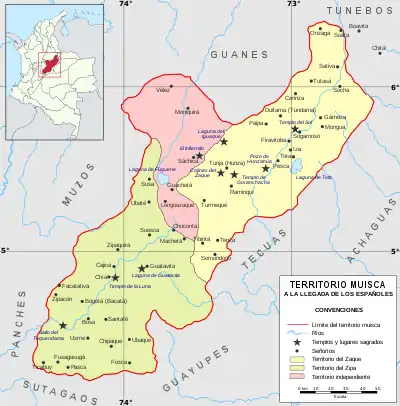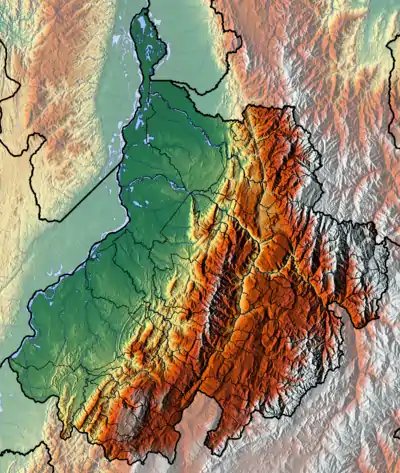 Topography of Santander Department The Lache lived in highlands of the eastern part, continuing into Boyacá | |
| Total population | |
|---|---|
| 0 (2004) | |
| Regions with significant populations | |
| Santander, Boyacá, | |
| Languages | |
| Chibcha | |
| Religion | |
| Traditional | |
| Related ethnic groups | |
| U'wa, Muisca, Guane |
The Lache were an indigenous, agrarian people in the highlands of what is now central Colombia's northern Boyacá and Santander departments, primarily in Gutiérrez Province and García Rovira Province.[1][2] They were part of the Cocuy Confederation[3] and spoke Chibcha, trading predominantly with other Chibcha speakers, such as the Muisca, Guane, Pijao and Chitarero.[4] Trade included salt and textiles, as well as food stuffs.[4][5] The Lache farmed maize, potatoes, quinoa and cotton, among other crops.[6]
In the 17th century, Lucas Fernández de Piedrahita wrote of the habit of the Laches in bringing up younger male children as culturally female.[7][8]
The name Lache is preserved in a barrio of Bogotá known as Los Laches.
Municipalities belonging to Lache territory
The Lache inhabited the highlands of eastern Santander and northern Boyacá and a small part of northwesternmost Casanare.[1][9][10]
| Name | Department | Altitude (m) urban centre |
Map |
|---|---|---|---|
| Capitanejo | Santander | 1090 | 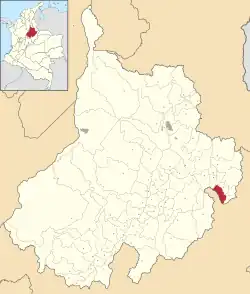 |
| Carcasí | Santander | 2080 | 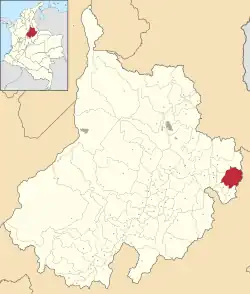 |
| Cepitá | Santander | 3000 | 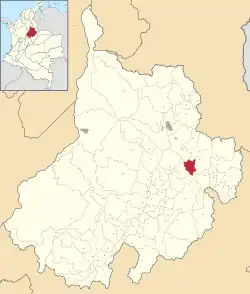 |
| Cerrito | Santander | 2220-4200 | 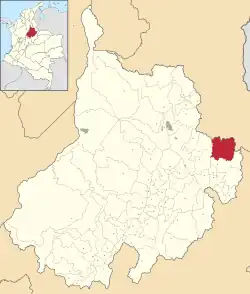 |
| Concepción | Santander | 2005 | 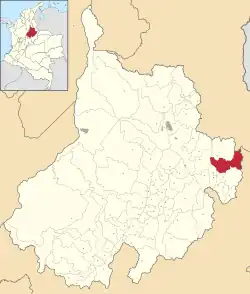 |
| Enciso | Santander | 1484 | 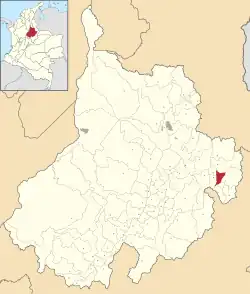 |
| Guaca | Santander | 2401 |  |
| Macaravita | Santander | 2320 | 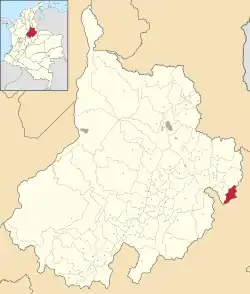 |
| Málaga | Santander | 2235 | 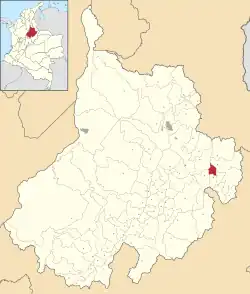 |
| Molagavita | Santander | 2196 | 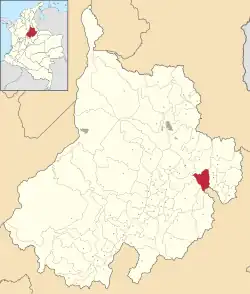 |
| San Andrés | Santander | 1617 | 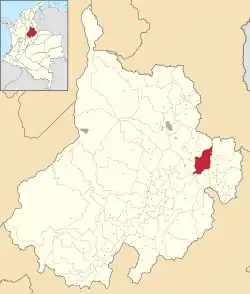 |
| San José de Miranda | Santander | 2381 |  |
| San Miguel | Santander | 2200 | 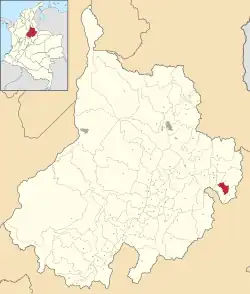 |
| Chiscas | Boyacá | 2368 | 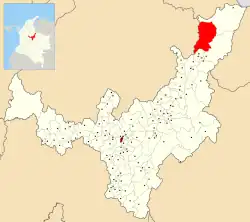 |
| Chita | Boyacá | 2964 | 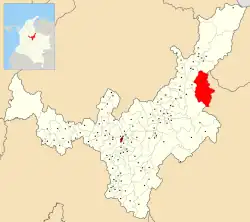 |
| El Cocuy | Boyacá | 2750 | 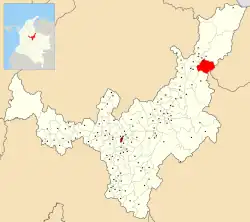 |
| El Espino | Boyacá | 2128 | 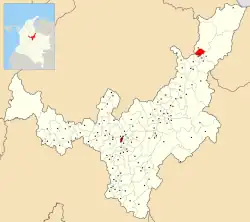 |
| Guacamayas | Boyacá | 2296 | 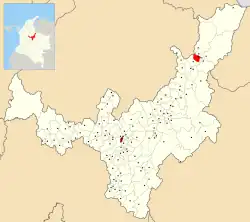 |
| Jericó (shared with Muisca) |
Boyacá | 3100 |  |
| Panqueba | Boyacá | 2258 |  |
| La Salina | Casanare | 1400 |  |
| San Mateo | Boyacá | 2500 | 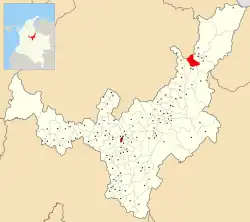 |
| La Uvita | Boyacá | 2700 | 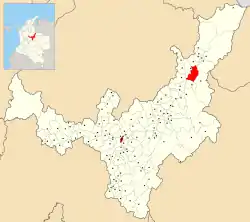 |
See also
References
- 1 2 (in Spanish) Los Laches y Chitareros y sus caminos a la llegada de los españoles
- ↑ Rodríguez 1992, p. 17
- ↑ Rueda, Carl Henrik Langebaek (1987). "Tres formas de acceso a recursos en territorio de la confederación del Cocuy, siglo XVI". Boletín Museo del Oro (in Spanish). 18: 29–45.
- 1 2 Rodríguez 1992, p. 18
- ↑ Acuña Rodríguez, Blanca Ofelia (2006). "Territorio indígena de la sal en la Sierra Nevada del Cocuy. S. XVI" (PDF). Historia y Espacio (in Spanish) (27).
- ↑ Rodríguez 1996
- ↑ Trexler 1999, p. 86
- ↑ Tribín, Hugo Armando Sotomayor (June 2003). "Una reflexión histórico - antropológica sobre el maltrato infantil en Colombia (Segunda Parte)". Pediatria (in Spanish). 38 (2). Archived from the original on 5 April 2009.
- ↑ (in Spanish) Lache people territories
- ↑ (in Spanish) Indigenous groups of Boyacá and surroundings Archived 2011-12-25 at the Wayback Machine - Banco de la República
Bibliography
- Rodríguez, José Vicente (1992). "Características Físicas de la Población Prehispánica de la Cordillera Oriental de Colombia: Implicaciones Etnogenéticas". Maguaré. 8: 7–45.
- Rodríguez, José Vicente (1996). Dieta, Salud y Demografía Prehispánica en la Cordillera Oriental de Colombia: Mitos y Realidades Sobre el Bienestar Aborigen. Departamento de Antropología, Facultad Ciencias Humanas, Universidad Nacional de Colombia, Santafé de Bogotá.
- Trexler, Richard C. (1999). Sex and Conquest: Gendered Violence, Political Order, and the European Conquest of the Americas. Cornell University. pp. 1–304. ISBN 9780801484827. Retrieved 2016-07-08.
Further reading
- Ariza, Gonzalo (1952). Los Laches. Villegas Editores.
External links
- "La Coctelera: Realidades Colombianas - Historia y Geografía: Asi es Santander 3" (in Spanish). 21 June 2003. Archived from the original on 30 December 2005. Retrieved 5 August 2006.
